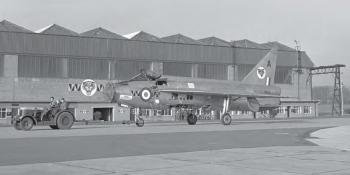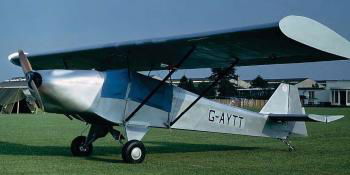Comment on historic aviation by the chief executive of the UK’s Light Aircraft
Association



“There was effectively no throttle control for the early ‘Jet Wot’ flights, which were accomplished with groundcrew holding the aircraft back and releasing it into flight”
As well as marking the centenary of the Royal Air Force, 1 April this year also brought one of the best aviation-related All Fools’ Day spoofs, courtesy of Vintage Wings of Canada. The Québec-based collection proudly announced that, due to continuing issues with its recalcitrant Bristol Pegasus radial engine, its Fairey Swordfish had been reconfigured with a Pratt & Whitney PT6A turboprop.
Of course, it was but the figment of a highly creative imagination, supported by excellent Photoshopped images and an equally convincing — and rather attractive — artist’s impression (see for yourself at www.vintagewings.ca/VintageNews). Adding to the fun was the suggestion that, “In anticipation of vintage aviation enthusiasts decrying the loss of that clattering old Pegasus radial, the TurboFish will carry a single ‘Tannoy Torpedo’, a fibreglass replica of an 18in MkXII air-launched ‘Redhead’ torpedo mounted with two Bose speakers… The system allows spectators on the ground to get the full auditory experience of historically accurate ‘nine cylinders of ass-pain’.” I must admit I choked on my morning coffee at that point…
All credit to Vintage Wings of Canada, but I wonder whether it was aware that, just short of 60 years ago, a turboprop biplane did fly, with a then state-of-the-art unit attached to a pre-war airframe design? The project was the brainchild of Viv Bellamy, chief flying instructor of the Hampshire Aeroplane Company, based in the hangar and former test flight hut of Supermarine at Eastleigh.
Bellamy’s ever-creative brain and can-do attitude were legendary. The former Fleet Air Arm Seafire pilot had already acquired Spitfire VIII Trainer G-AIDN, ostensibly on the club’s behalf, adding to a fleet which included Tiger Moths, an Avro XIX and, for club trips overseas, the last surviving four-engined DH86 Express. Bellamy had also, in 1957, persuaded ex-Royal Flying Corps pilot Joe Currie, now the club’s chief engineer, to build two examples of his pre-war Wot biplane to offer lower-cost flying to members.
The first of these, G-APNT, was initially powered by a two-cylinder JAP J-99 engine of 37hp, so it was natural that when the second, G-APWT, appeared with a Walter Mikron of no less than 62hp, it became known as the ‘Hot Wot’. There were experiments with floats, resulting in the aircraft being labelled the ‘Wet Wot’ as it splashed around the River Hamble.
Now, in early 1960, came the idea of the ‘Jet Wot’. At an agricultural show Bellamy had apparently spotted a Rover IS60 industrial gas turbine driving a water pump. Further enquiry revealed that the lightweight unit matched the power of the Walter Mikron almost exactly, and it was already seeing aviation use as an auxiliary power unit on the back of Avro Vulcans and Armstrong Whitworth Argosies.
A deal was struck and a unit arrived at Eastleigh, with G-APWT becoming the guinea pig. The initial installation was basic, to say the least. The turbine ran at 45,000rpm, with reduction gearing lowering output revolutions to 3,000rpm, the equivalent of full throttle for most propeller aircraft. It effectively meant that there was no throttle control for the early flights, which were accomplished with groundcrew holding the aircraft back and releasing it into flight. On landing the pilot approached, still on full throttle, before pulling a length of kite cord which turned off the fuel tap. The remainder of the landing was accomplished in dead-stick silence.
Later in the Jet Wot’s development period, better throttling and the use of a variable-pitch propeller made the aircraft a much more manageable proposition. Bellamy’s work with Rover extended into larger turboprops fitted to an Auster V and a de Havilland Chipmunk. Sadly, the developments ended with the soaring fuel prices and economic crises at the end of the 1960s, but there’s currently at least one LAA homebuild project under construction with a small turboprop, so maybe the idea is still a bit more than just an April Fool.





